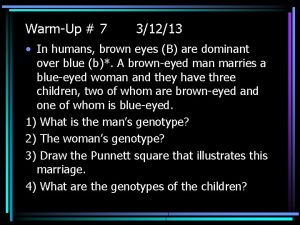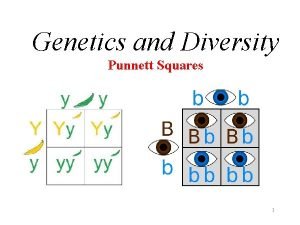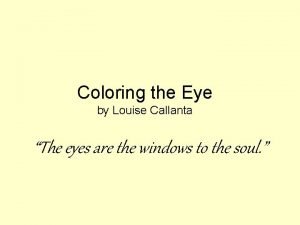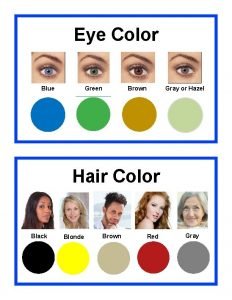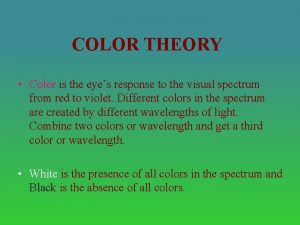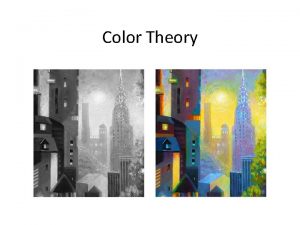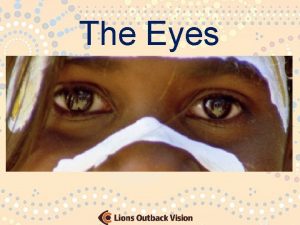COLOR THEORY Color is the eyes response to









- Slides: 9

COLOR THEORY • Color is the eye’s response to the visual spectrum from red to violet. Different colors in the spectrum are created by different wavelengths of light. Combine two colors or wavelength and get a third color or wavelength. • White is the presence of all colors in the spectrum and Black is the absence of all colors.

• The additive color system uses red, green, and blue (RGB) to make-up the spectrum of color. This method is used in computers and TV monitors. • CMYK (cyan, magenta, yellow, black) is the color system used in commercial printing. • The subtractive color mixing method is used when mixing pigments or paints.

The Color Wheel • When the spectrum is organized as a color wheel, the colors are divided into groups called primary, secondary, and tertiary (or intermediate) colors; analogous and complementary; and also as warm and cool colors. • The Additive and Subtractive color wheels are different and represent different ways of mixing colors. Additive uses light and Subtractive uses pigment.

Additive Color Wheel Primary colors: red, green, blue Secondary colors: yellow, magenta, cyan

CMYK COLOR WHEEL Uses cyan, magenta, yellow and black

Subtractive Color Wheel Primary colors: red, yellow, blue Secondary colors: orange, green, purple

Every color has 3 distinct properties: • Hue—the primary or secondary color that makes up a given color. (the hue of maroon is red, the hue of lilac is purple) • Value—a color’s variation of light and dark. A tint is when white is added (pink is a tint of red) and a shade is when black is added (navy is a shade of blue). • Intensity (saturation)—the level of pure color that is present.

Complementary colors are two colors on opposite sides of the color wheel (red and green) Split Complement: a color and the two colors adjacent to the complement. (red, yellow-green, and bluegreen)

Analogous: colors adjacent on the color wheel. (red-violet, red, and red-orange) Triad: three colors equidistant on the color wheel. (red, yellow, and blue)
